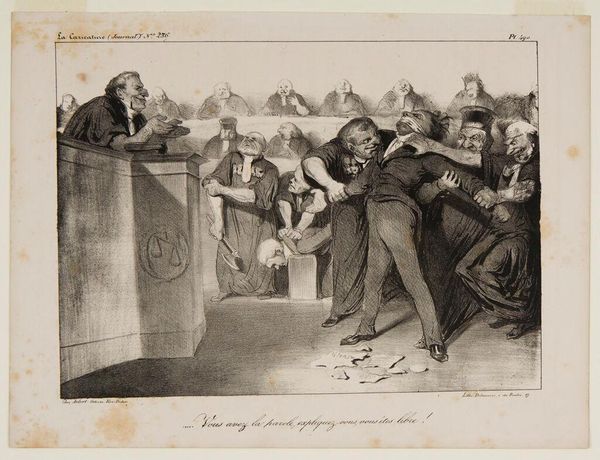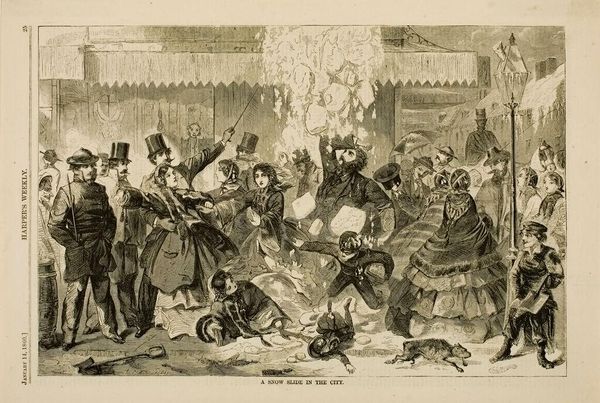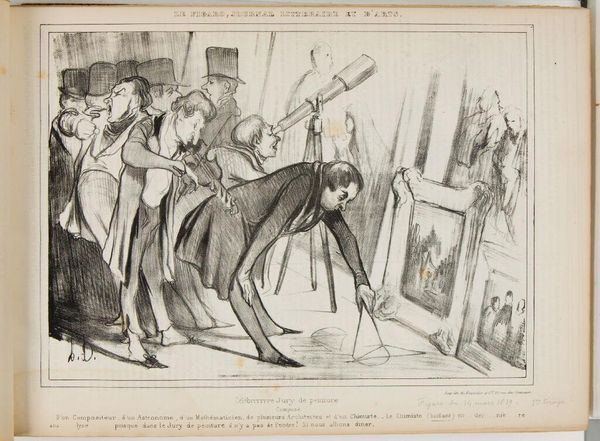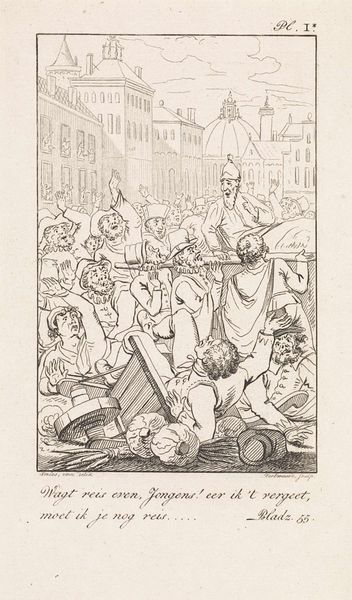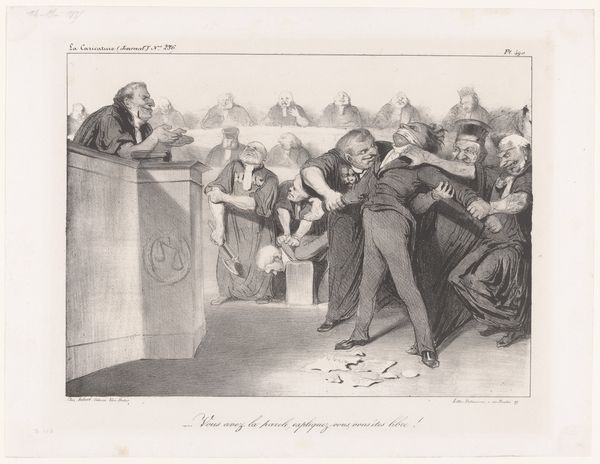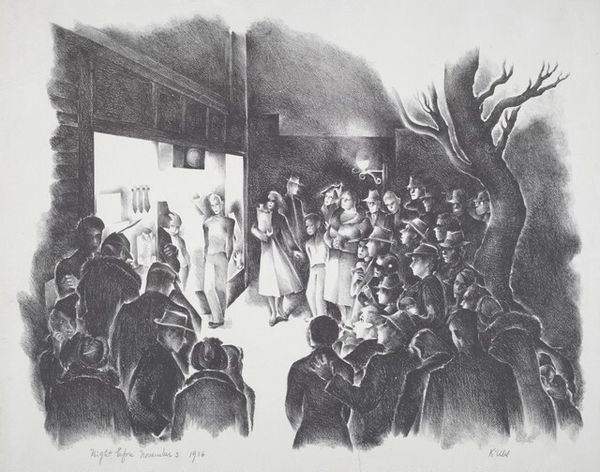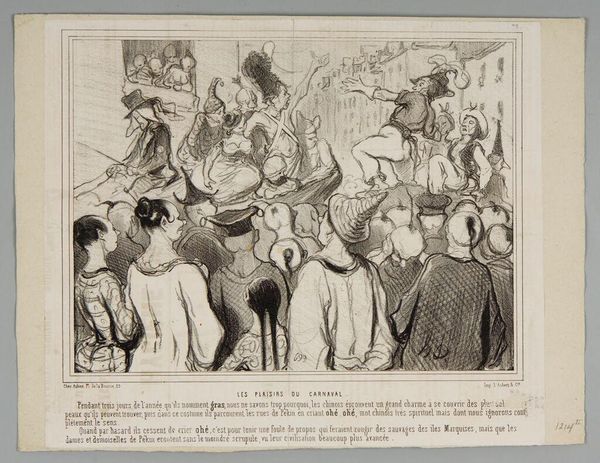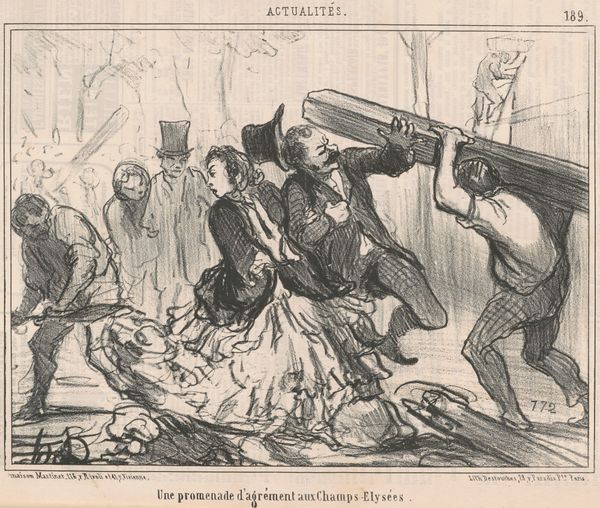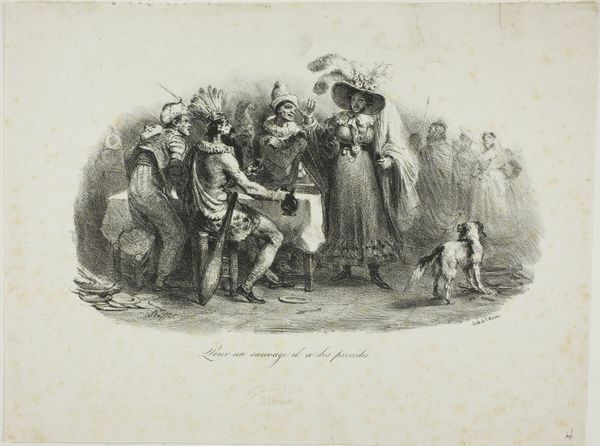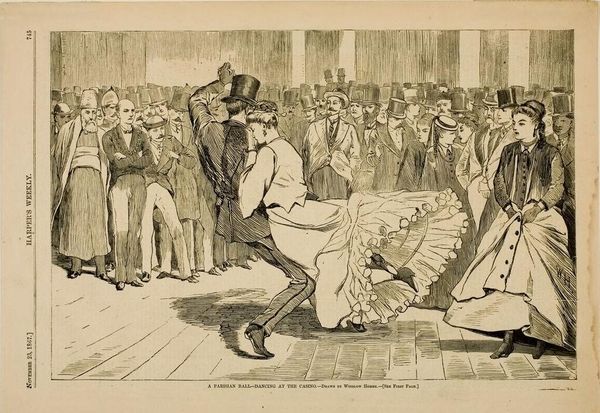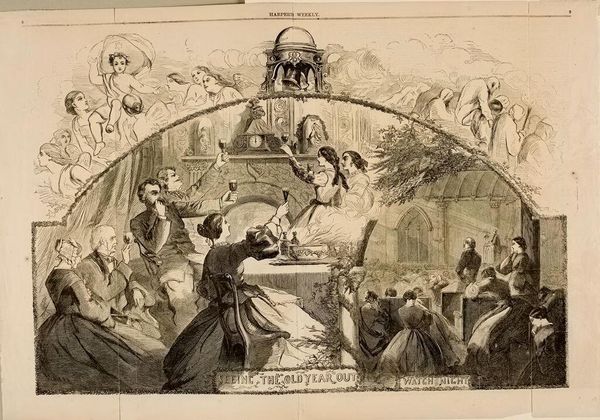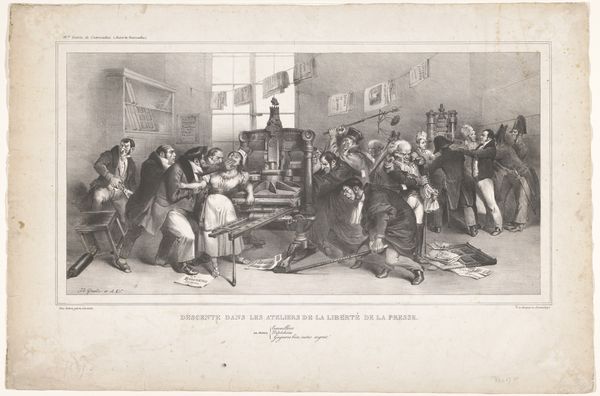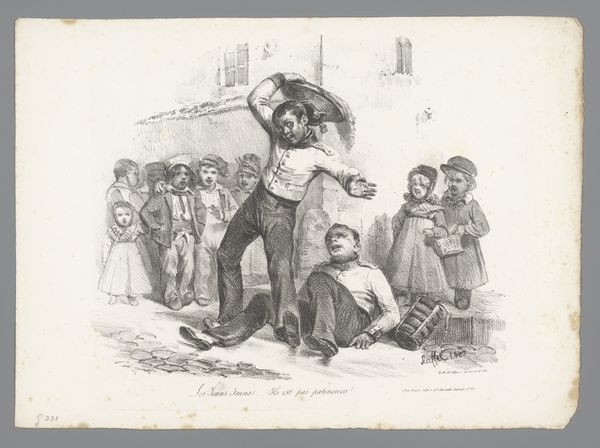
drawing, print, etching, engraving
#
drawing
#
narrative-art
# print
#
etching
#
pencil sketch
#
figuration
#
romanticism
#
men
#
genre-painting
#
engraving
Dimensions: sheet: 7 3/8 x 9 3/8 in. (18.7 x 23.8 cm)
Copyright: Public Domain
Curator: Felix Octavius Carr Darley's etching and engraving, titled "A Rowdy Party", dating from 1845, is a whirlwind of frenetic energy! What catches your eye? Editor: Utter chaos! And in monochromatic shades, no less. There's a primal force expressed by these swirling lines that evokes a state of anarchy, all the more remarkable considering it's just etching on paper. You feel the intensity of labor and purpose. Curator: Indeed. I’m particularly drawn to the figure at the center, arms outstretched like a conductor leading an unruly orchestra. Notice how his exaggerated posture echoes across the room—it’s a physical manifestation of unbridled emotion. Almost as if a Dionysian impulse has gripped this entire gathering. Editor: You know, when you look at the production of a print like this, we must consider how Darley was mediating class boundaries. An etching like this could cheaply reproduce a 'scene', making what was maybe an aristocratic gathering, visible to working-class folk, maybe fueling different imaginaries. The materiality of a print challenges established hierarchies, circulating narratives for consumption. Curator: That's fascinating. And it's a keen observation how this narrative unfurls for different classes; still, let’s think about how this "Rowdy Party" embodies larger cultural themes, and echoes through visual memory, doesn't it? The upended table, the sprawled figure...it all screams a temporary inversion of order. Even the lighting seems dramatic and stage-like, emphasizing the theatricality of it all. Editor: Perhaps Darley wanted us to look critically at these gatherings; at the paper quality or production. Or to think about who even consumes art about party settings, right? To reproduce is to raise the question: who gets to look at whom? And from what socio-economic class? Curator: I appreciate how you bring this back to the mechanics of visibility, questioning social mores around consumption and dissemination, and the politics involved in the printing. The composition leads our eye directly from foreground collapse toward some kind of…transcendence? The windows. Editor: Seeing the actual labor reminds you of a world where not just the affluent participate in meaning-making. It democratizes the whole sense-making and gives this work so much weight! Curator: So very true! That adds so many new layers. Thanks! Editor: Thank you! It has really altered how I view this scene.
Comments
No comments
Be the first to comment and join the conversation on the ultimate creative platform.

